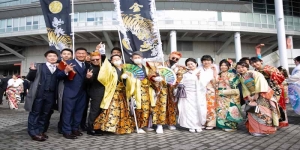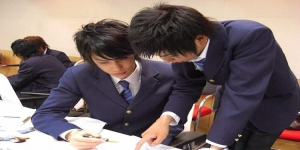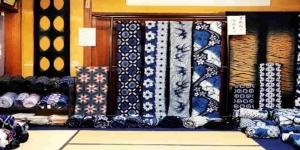Miko 巫女 A Look at the Priestesses of the Temples
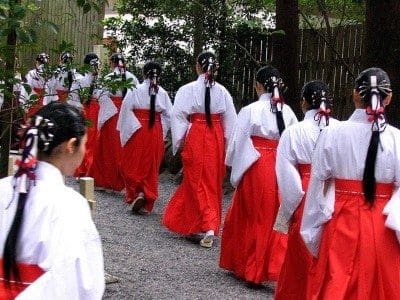
Within the shinto sanctuaries, in the area not accessible to the public, there is a perimeter, called sacred perimeter, and within it we find a young woman intent on a dance, called Kagura 神 楽. The young woman in question is the MIKO 巫女 who is also identified with the term "Virgin of the Temple".
The Miko, in an ancient epeca, was a shaman, an expert ecstasy and was presented with a pair of red and white clothes, and a mirror embedded in a golden crown that cuts his hair. His sacred art comes from the goddess Ame no Uzume 天宇 受 売 命 and dancing in a trance state attracts the attentions of the goddess Amaterasu, Amaterasu-o-mi-kami 天 照 大 御 神.
The state of ecstasy where Miko fell during the dance is called kamigakari 神 憑 り and the intent of dancing performed by Miko is to offer his own body and voice to Kami 神. The priestess entered into trance until it came to a symbolic death and this event allowed the members of the community to have a direct connection with the divinities, so Miko became the link, the link between the sacred and the profane who in fact represented for the faithful the salvation.
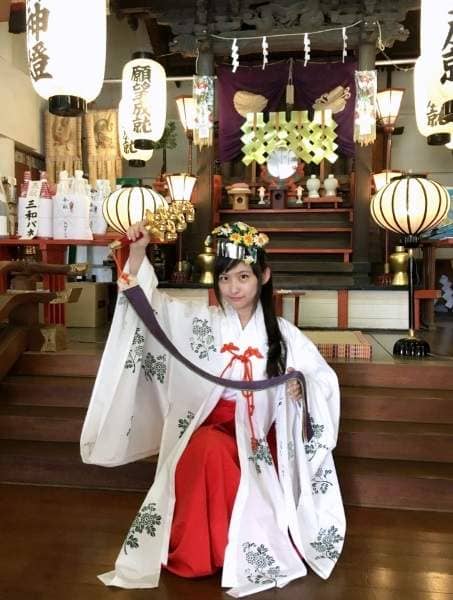
But the words that a God told the faithful through Miko could have found different interpretations and here comes the First Priest, first not in the sense of the first priest in the temple, but which, given its importance, was the guarantor of the temple stability and religious values, he was touched by the task of elaborating the meaning of what Miko had said and then referring to the rest of the faithful waiting.
But, as is also stated in Kojiki 古 事 記 (the oldest chronicle in Japan and the first text of Japanese narrative came to us), there was always tension between the religious authority and Miko, precisely because it involved the interpretation of dance and of the words of the shaman, for the priest to ensure the right to be the only one capable of interpreting made the rite take place at a point of the temple not accessible to the faithful.
The only accomplice with the priest he could attend was the helper, saniwa 沙 庭, who also accompanied him outside the sacred place. After reading the response to the faithful, he also issued a ban on refuting what he said to be the cruelty of godlike wrath.
The vocation of a girl to become Miko could be manifested through initiatory dreams or with sudden and unexpected, as violent, mystical possessions. These states indicated to the woman that the divinity had chosen her by sending them "the soul"; from that moment on, he would have been under the care of a teacher who would educate him in controlling and dominating all these events as well as teaching him the dances, sacred hymns, litanies, and the spells that tradition imposed upon him.
The Miko as well as through the men and the divine is the "bride of God" and this can also be understood through the kagurauta 神 楽 歌, or shamanic hymns, and the mythological narratives like that of Tamayorihime 玉 依 毘 売 命 (Japanese divinity daughter of God the Golden Sea Dragon), and in the figure of God's bride the ecstatic possession was also considered as a sexual union between Miko and God.
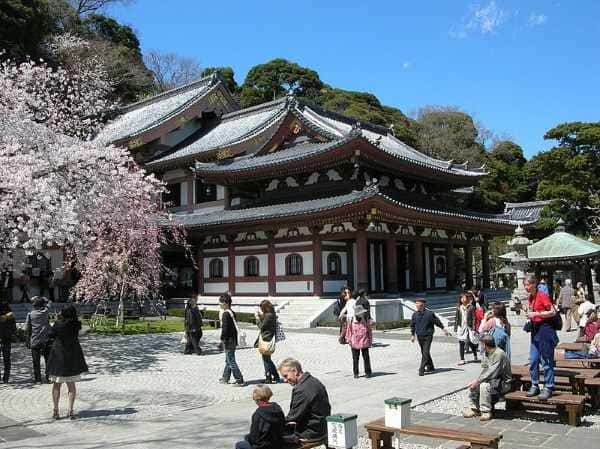
Hase-kannon 長谷観音 a Kamakura, Kanagawa-ken.
In the middle of the seventh century, something new happened in the Japanese religious landscape, the ideology of Confucianism was starting to enter in the japanese society , bringing new developments and changes so that Miko's ecstatic experiences were banned in favor of more sophisticated and refined ceremonies, because those possessions were judged too free, broken, a source of disturbance.
The introduction of these novelties, in my view, gave the coup of grace, if so, to the importance of women within the archaic (and partly modern) Japanese society, a change that had already begun to appear during the Yamato period (the period of Japanese history ranging from 250 AD to 710 AD), but it is again in Kojiki, who is more aware of this change, this transformation of society from matriarchy to patriarchy.
In the episode narrated in Kojiki, where Goddess Amaterasu, upset by Susanowo's aggression, a god who impersonates the wild, inhumane, retreats into a cave, and this led to the darkening of the sky and the eternal night on land. The Goddess Ame no Uzume, the first shaman, took the initiative and with a frantic dance attracted Goddess Amaterasu out of the cave, bringing the light into the darkness and then life.
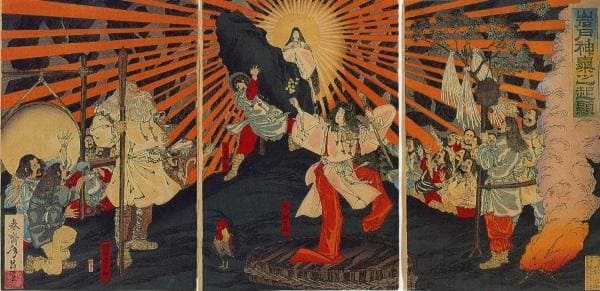
Amaterasu-ō-mi-kami 天照大御神 opera in tre tavole di Sugimoto Yoshio.
Susanowo was later expelled from the Heavens and exiled to the land where he helped men defeat the demons and the dragon, and in fact created two societies of the "High Heaven of Heaven" Takamagahara 高 天 原 "where God's society maintains its matriarchal structure and that of the land, Japan, where God Susanowo became the founding God and where he reigns over a patriarchal social system.
The trance, the ecstatic experience of the Miko would continue in the Buddhist context and especially in Shugendo, but Miko's role was inevitably destined to end at the margins of religious functions. His dances became folklore and his presence in the temples changed to become an aide priest in the functions and in the temple.

 English (United Kingdom)
English (United Kingdom)  Italiano (it-IT)
Italiano (it-IT) 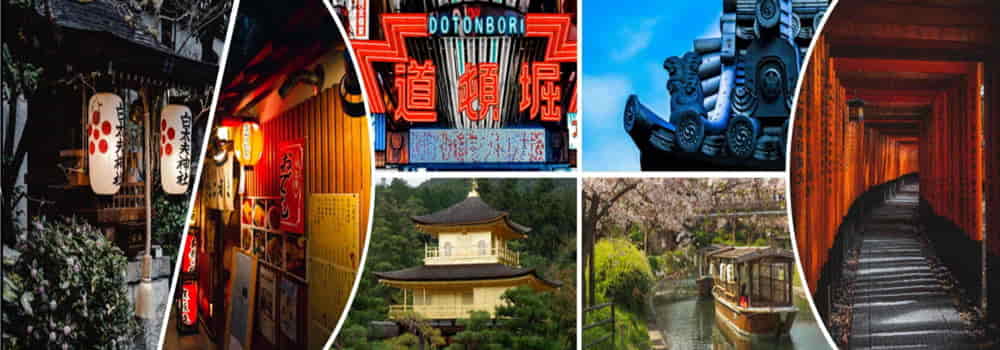
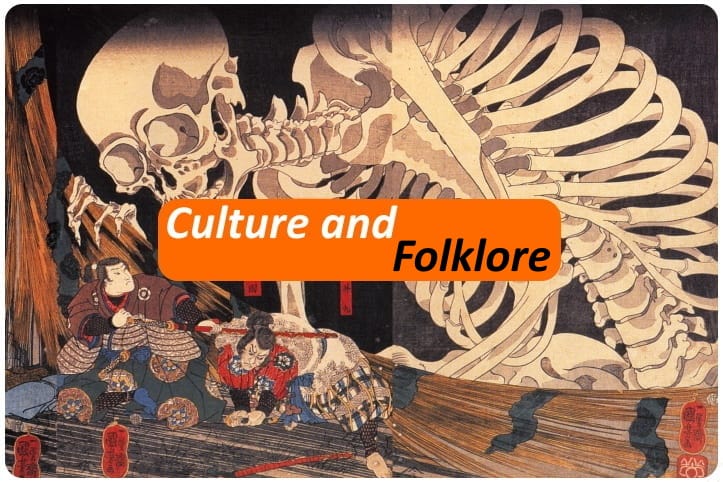




![[Review] Princess Toyotomiプリンセス トヨトミ](https://www.fukainihon.org//cache/mod_jt_contentslider/fdfb524f85518b9476158c79c8ea022f_328.png)
